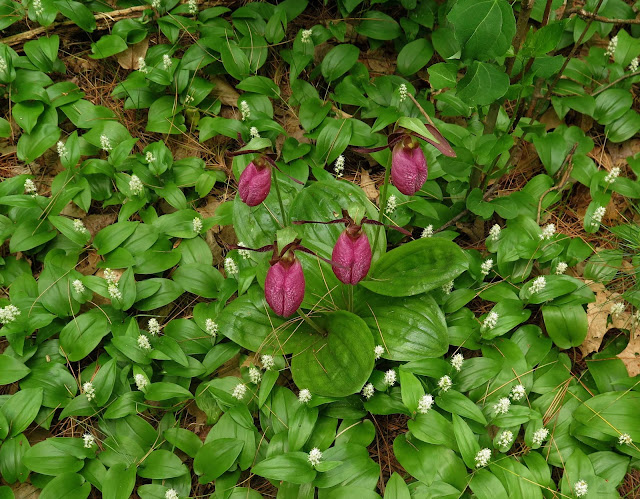It's Wild Lupine time at the Wilton Wildlife Preserve and Park right now, a floral extravaganza not to be missed!
At every turn of the trails at the Gick Farm Parcel of this preserve, another spectacular floral vista appears.
This gorgeous native wildflower (Lupinus perennis is its scientific name) is very much at home in the nutrient-poor soils of this sandy, oak-pine savanna habitat. As is true for all members of the Pea Family (Fabaceae), lupines can provide for their own nutritional needs by “fixing” nitrogen, thanks to a symbiotic relationship with a bacterium that takes excess nitrogen from the soil. This nitrogen is then stored in nodules on the lupine roots.
While Wild Lupine occurs spontaneously at many other sandy-soiled locations throughout Saratoga County, this plant gets a special population boost at this preserve, where seeds are planted and the lands are managed to provide habitat for the Federally Endangered Karner Blue Butterfly. While the adult Karner Blues can feed on any nectar-producing flower, the larvae can eat only the leaves of our eastern Wild Lupine. I saw none of the brown-winged females today (perhaps this year's first generation has already laid its eggs and died), but I did see a very few blue-winged males, such as this one feeding on a Blackberry flower.
This photo reveals how very sandy the soil is at this Gick Farm Parcel. I followed the trail into the shady woods, where pines predominated.
If you want to find Pink Lady's Slippers (Cypripedium acaule), one of our most beautiful native orchids, there's no better place to look than a pine woods with sandy soil. I had only stepped a few yards into the woods when I saw so many Pink Lady's Slippers it was difficult to count them all!
Wow! Just, wow! I saw so many Pink Lady's Slippers, each one seeming to be more beautiful than the last.
They were just as beautiful from the rear as from the front!
And nothing could enhance the beauty of the Lady's Slippers more than being surrounded by masses of blooming Canada Mayflower (Maianthemum canadense).
Nor could any flower enhance the beauty of Canada Mayflower better than the lovely white blooms of Starflower (Lysimachea borealis), another abundant denizen of this pine woods.
Even the small, rather nondescript flowers of Tower Mustard (Turritus glabra) looked quite handsome today, the slender plants standing straight and tall, with acres of massed purple blooms serving as their foil.










What a beautiful post!
ReplyDeleteYou bring nature into my house. Since we moved here to Tenn. I don't get out to nature much unless someone drives us. In Conn. I had many of these wildflowers growing in my Garden. Thank you so much for sharing.
Lovely!!
ReplyDeleteWhat a wonderful place that is. Thank you for the wonderful photos.
ReplyDelete